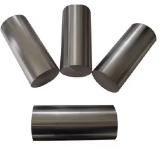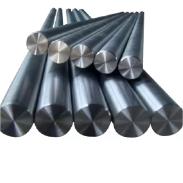Shiny and Safe? The Truth About Chrome Plated Metal and Rust
(Does Chrome Plated Metal Rust)
You’ve seen it everywhere—gleaming car bumpers, slick kitchen faucets, flashy motorcycle parts. Chrome-plated metal looks like it’s made of liquid mirror. But here’s the big question: can that shiny armor actually lose its fight against rust? Let’s dig into the science, the sneaky pitfalls, and how to keep your chrome looking like new.
First, what even *is* chrome plating? Think of it like a superhero costume for metal. Manufacturers layer a thin coat of chromium over steel or iron. This isn’t just for looks. Chromium is tough. It resists scratches, shrugs off fingerprints, and forms a shield against moisture and oxygen—the two villains that team up to create rust.
But here’s the catch. Chrome plating isn’t invincible. Picture it like a raincoat. If the coat gets torn, rain soaks through. Same idea. If the chrome layer cracks, chips, or wears off, the metal underneath becomes exposed. Steel and iron love to react with water and air. When that happens, rust creeps in. Ever seen a vintage car bumper with orange spots? That’s the steel waving a white flag under damaged chrome.
So when does chrome fail? Let’s break it down.
**1. The coating gets damaged.** Chrome is hard but not indestructible. Scratches from keys, gravel, or even harsh cleaning tools can breach the surface. Saltwater or road salt in winter speeds up the attack. Once the metal under the chrome meets moisture, rust starts a slow invasion.
**2. Cheap plating.** Not all chrome is equal. High-quality plating involves layers—like copper and nickel under the chrome—to boost protection. Cut corners, and you get a thin, uneven coat. It might look good at first, but weak spots develop fast. Bargain-bin chrome items often rust quicker because the shield is full of holes.
**3. Environment matters.** Chrome handles indoor life well. But throw it into a salty beach town or a place with acid rain, and the challenge grows. Humidity clings to tiny flaws in the plating. Pollution chemicals speed up corrosion. Even fingerprints can leave traces of oil and salt, eating away at the chrome over time.
Now, how do you stop rust from hijacking your chrome?
Keep it clean. Dirt and grime trap moisture. Wipe down chrome surfaces regularly with a soft cloth and mild soap. Dry them thoroughly. For outdoor items like bike parts or grills, a quick rinse after rain or spills helps.
Avoid abrasive scrubs. Steel wool or rough sponges are enemies. They scratch the surface, giving rust a foothold. Use gentle cleaners instead. A mix of vinegar and water works for light stains. For stubborn spots, try baking soda paste—but rub softly.
Add a protective layer. Car wax or specialized chrome sealants add extra defense. They fill microscopic gaps in the plating, blocking water and oxygen. Apply wax every few months, especially for items exposed to the elements.
Check for damage. Inspect chrome items occasionally. Tiny chips or cracks can be fixed early with chrome polish or touch-up kits. Ignore them, and rust will move in permanently.
One last thing: chrome itself doesn’t rust. Its superpower is resisting corrosion. But the metal it’s protecting? That’s a different story. Chrome plating is a bodyguard, not a force field. Treat it well, and it’ll keep your stuff shining. Let it get battered, and the hidden metal will betray you with rusty spots.
(Does Chrome Plated Metal Rust)
So yes, chrome-plated metal *can* rust—but only if its shiny armor cracks. The secret isn’t just about the chrome. It’s about understanding its limits and giving it a little backup. Keep an eye on it, clean it gently, and fix flaws fast. Your chrome will keep looking like a million bucks without turning into a science experiment.
Inquiry us
if you want to want to know more, please feel free to contact us. (nanotrun@yahoo.com)


